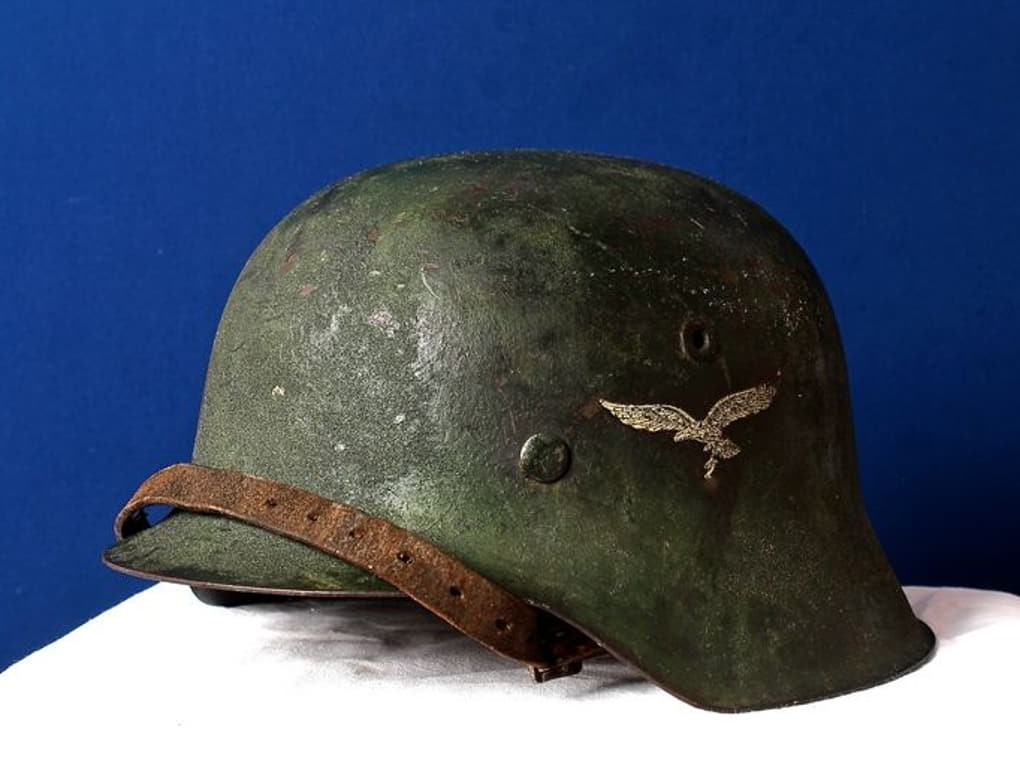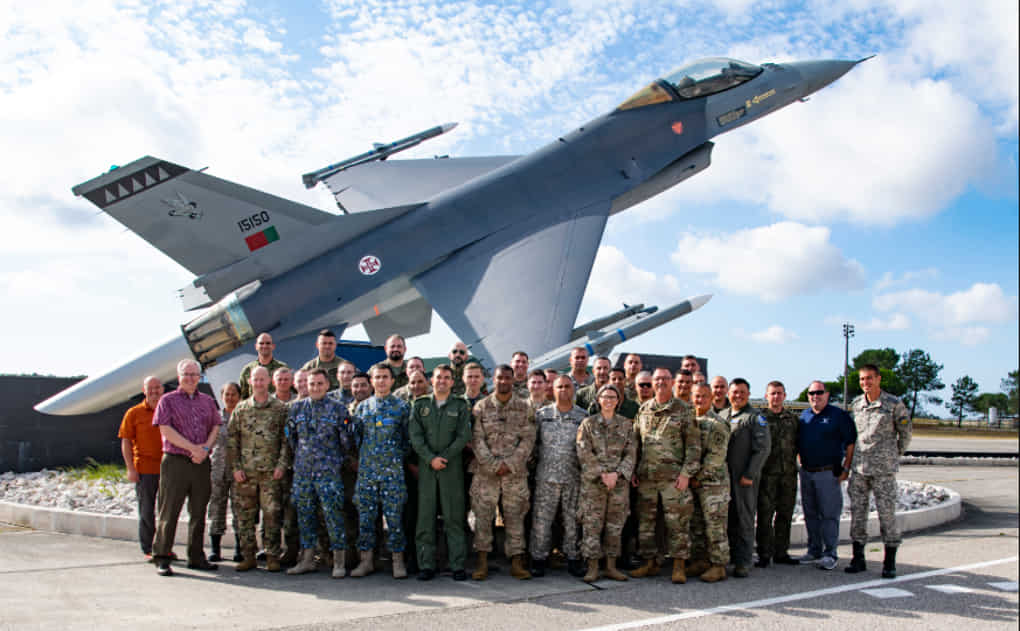Amazing facts about Supermarine Scimitar; The British Naval Fighter
The aircraft for today is the one that served the British Royal Navy in their Fleet Air Arm unit as their naval fighter aircraft. The earliest prototype version of the Supermarine Scimitar took it to the skies for this first time back in January of 1956 while the first delivery was made to the Royal navy back in 1957. It is a single-seat carrier-based fighter. The Supermarine Scimitar also happens to be the first Navy aircraft to be cleared by the British Royal Navy for carrying onboard Atomic weapons.
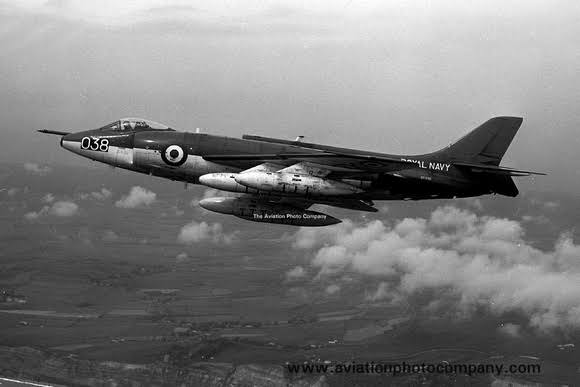
After entering the operational service with Royal Navy Fleet Air Arm, the Supermarine Scimitar went on to serve the multi-role missions of numerous following natures.
- Reconnaissance missions
- High altitude interception missions
- Low-level bombing runs
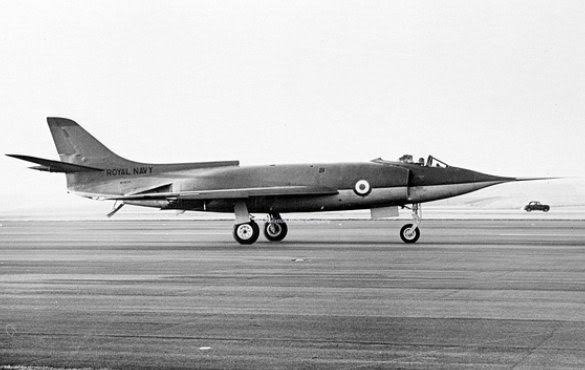
All of these multiple roles by the Supermarine Scimitar made it to be a lethal addition into the ranks of British Royal Navy and the aircraft proved it importance for nearly a full decade.
Origin:-
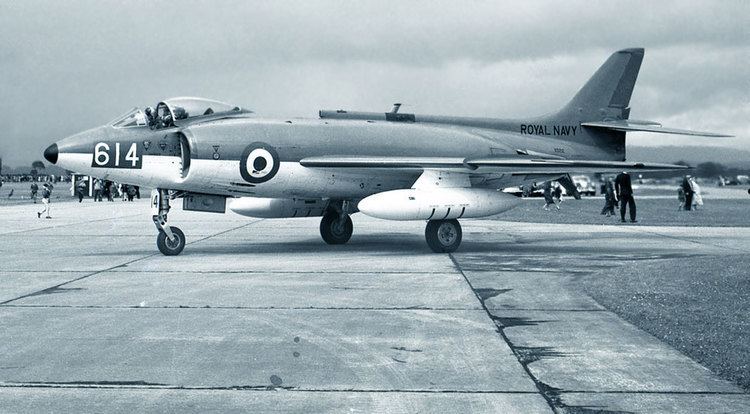
The origin of the Supermarine Scimitar arises from the retracted development of a Navy fighter aircraft named Vickers Supermarine Type 508. This Type 508 was an aircraft that was to be powered by a jet engine and had a straight wing design while its tail assembly would be of ‘Vee’ shape.
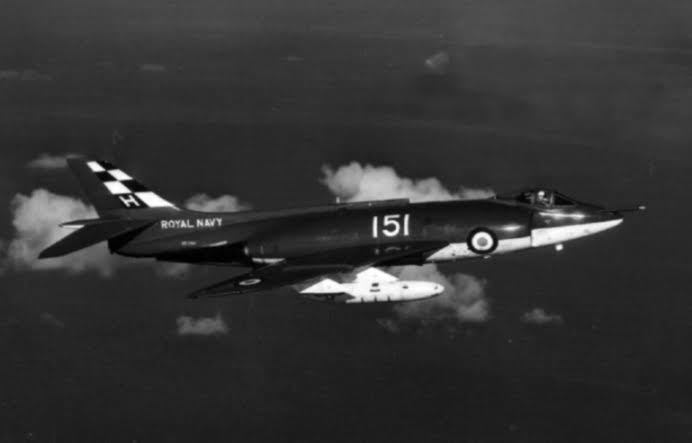
Shortly after the Type 508, another model designated as Type 529 emerged along with research being made on any other prototypes at that time. Finally, one of them was agreed upon that had the swept-back wing design and was designated as Type 525. This Type 525 would ultimately become the cornerstone for the creation of the Supermarine Scimitar.
Development and first flight:-

After the Type 525 design was agreed upon to be a new fighter aircraft, a prototype was created which had its maiden flight on 27th April 1954 but it suffered a crash landing and that was an end to the things for a short while.
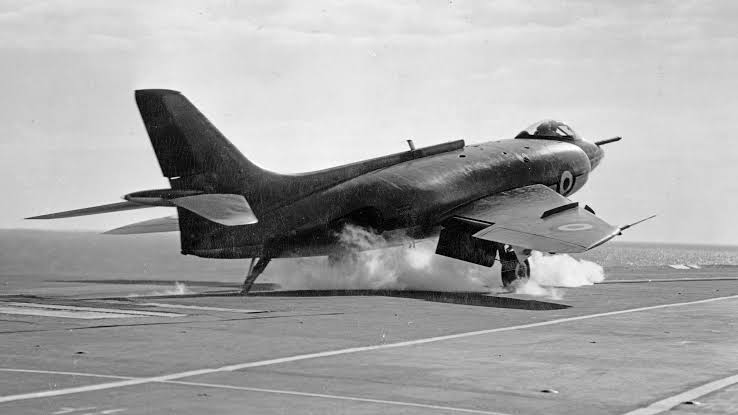
The design from Type 525 was taken as a step for the new design designated as Type 544 with revisions made in the overall design of Type 525. 3 prototypes, all of which differed each other subtly, were created. These prototypes were made under the Specification N113 of the Royal Navy for the creation of the fighter platform that would have low-level striking capabilities. The first Type 544 which would later be named as Supermarine Scimitar had its first flight back on 19th January 1956 and nearly 100 more were to be created under the name Scimitar F.1.

The very first officially designated Scimitar F.1 flew back on 11th January 1957. However, shortly after the order or 100 of these Supermarine Scimitars, the Navy held the order to only 76 aircraft.
Walk Around:-
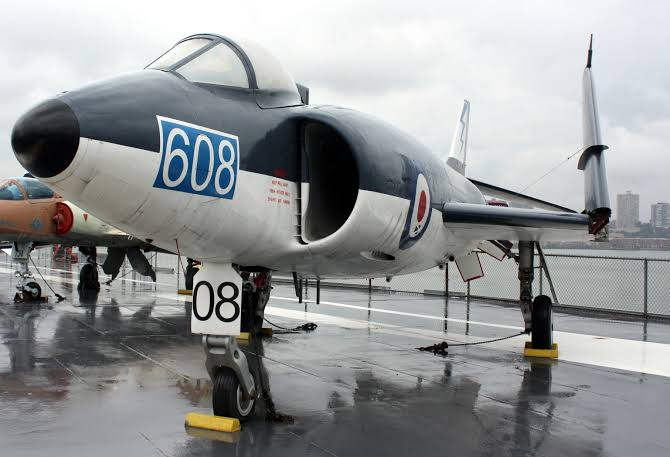
The overall size of the Supermarine Scimitar was very large but the design was of conventional nature; much like all the other navy fighter aircraft of its era. The cockpit of the Supermarine Scimitar was a well forward one buried in the rounded fuselage that had a short nose. Intakes for aspiration of the engine were made on both sides of the Supermarine Scimitar’s fuselage and they ran for about 80 percent of the aircraft’s entire length. These intakes would end with exhaust nozzles in the empennage.
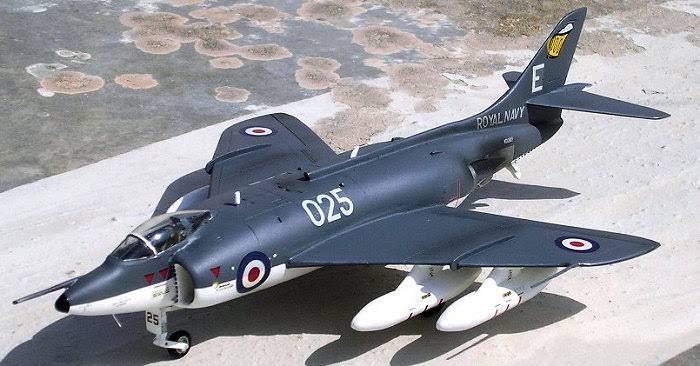
The empennage of the Supermarine Scimitar was also of conventional type with a single vertical tail fin that was elevated with horizontal planes. As for the main wings of the Supermarine Scimitar, they were of a low mounted design that were along the sides of the fuselage and would feature a high degree of a sweep along their leading edges.
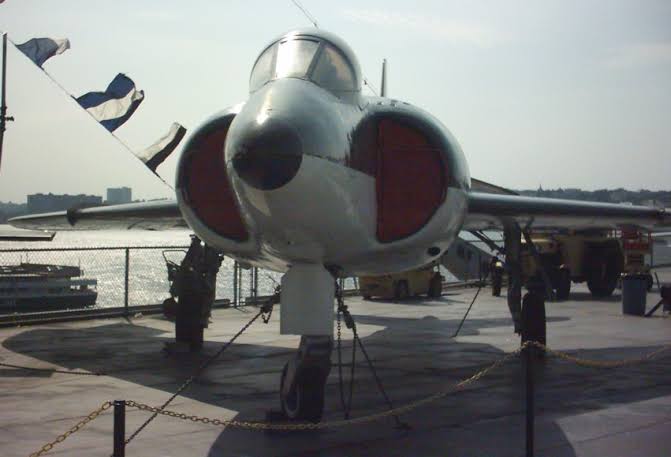
The undercarriage of the Supermarine Scimitar was of the traditional tricycle arrangement with two landing gears in the rear and single landing gear in the front; each with a single wheel and were fully retractable. The empennage of the Supermarine Scimitar also was fitted with the arrestor hook.
Power and performance:-
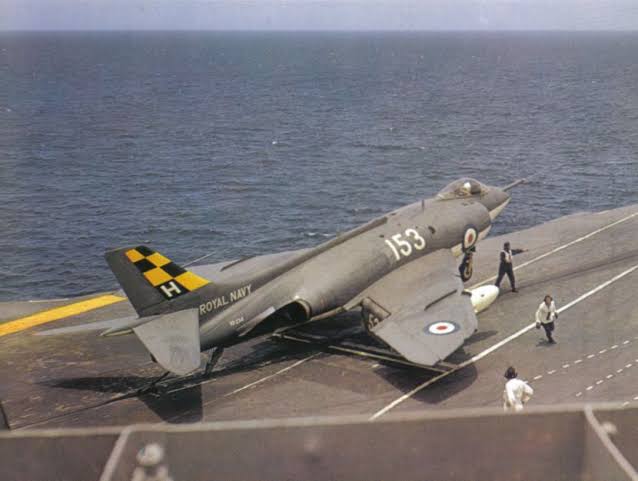
In order to power this massive fighter aircraft, the Supermarine Scimitar was fitted with 2 Rolls Royce Avon 202 series turbojet engines. Each of these engines would create a thrust of about 11250 lbs/ft. This much power allowed for the Supermarine Scimitar to fly at a top speed of about 736 mph with the maximum range limit of 1422 miles. As for the maximum service ceiling the Supermarine Scimitar, it was almost 46000 feet. The aircraft was designed to fly while weighing a total of about 34000lbs.
Weapons:-
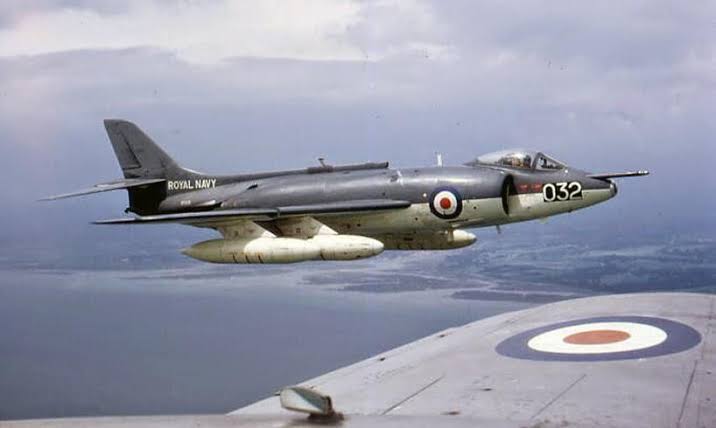
The Supermarine Scimitar had the standard armament configuration of quadruple ADEN cannons of 30mm. These cannons would be further complemented by the various munitions that could be fitted externally on the aircraft’s 4 hardpoints. These hardpoints were sued to equip the aircraft with air-to-air missiles like the American AIM-9 Sidewinder or the air-to-surface missiles like the AGM-12 Bullpup. In addition to these, the aircraft would also have the ability to carry 4 conventional drop bombs or 4 rocket pods; each weighing about 1000lbs.
Service with Royal Navy Fleet Air Arm:-
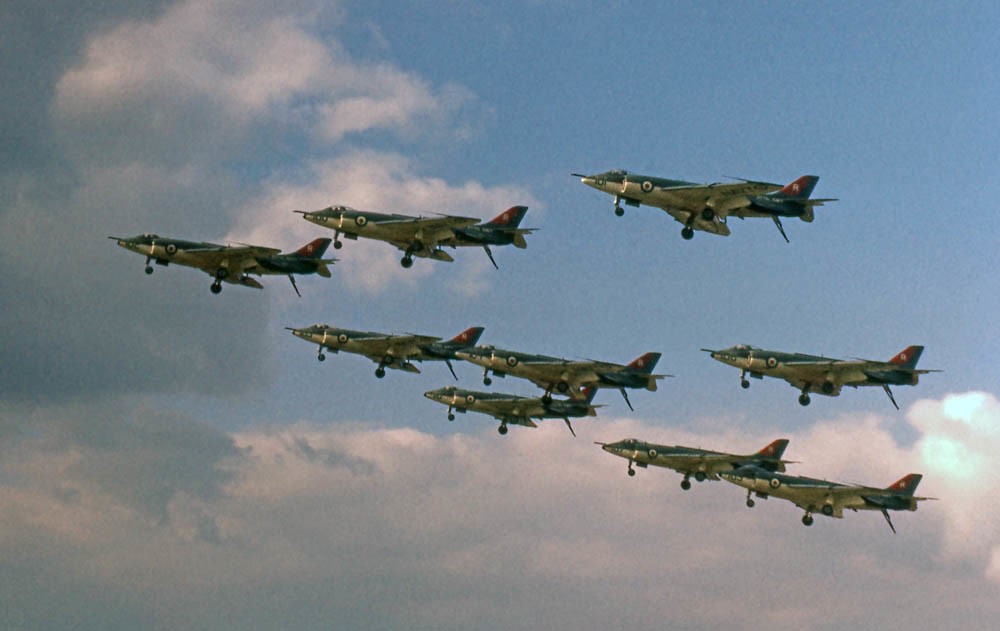
The Supermarine Scimitar entered the service of the Royal navy’s Fleet Air Arm back in 1957. Initially, the order was for 100 of these aircraft but the order was then limited to merely 76. The reason for that was that 39 of these Supermarine Scimitar aircraft got lost in accidents, which is a very bad accident rate for a fighter of such importance. Still, pilots and the maintenance crew of the Supermarine Scimitar liked this aircraft for its intricacies and performances. It was said that in order to keep a single Supermarine Scimitar in battle-ready condition, nearly 1000 hours of maintenance was needed.
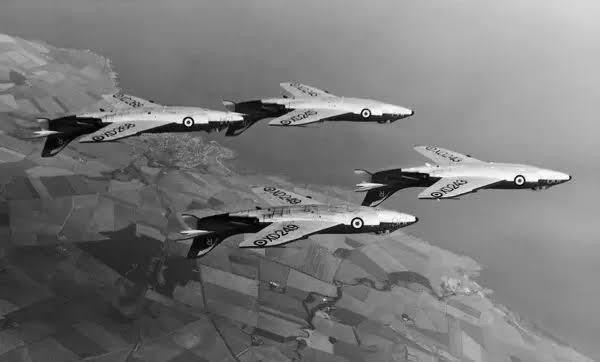
During its service with the Royal Navy, the aircraft served the following Naval Air Squadrons as it replaced the aging fleet of single-seat Hawker Sea Hawk.
- 738
- 800
- 80
- 804
- 807
The first users of the Supermarine Scimitar were the pilots at the Squadron no. 803 operating out of the area called Loussiemouth back in June 1958.
Retirement:-

The Supermarine Scimitar served the Royal navy well until 1966 and after that, it was removed from the service officially. The aircraft to replace the Supermarine Scimitar was Blackburn Buccaneer. This was an ironic situation because prior to replacing, Buccaneers were used as the aerial fuel tankers for the Supermarine Scimitar for some time.
Related Content
Interesting facts about the Soko G-4 Super Galeb aka Super Seagull
Interesting facts about Xian JH-7 Flounder/FBC-1 Flying Leopard
Share this content:

